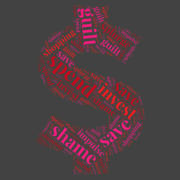INTERVIEW WITH GARY GORDON, PRESIDENT OF PACIFIC PARK FINANCIAL, INC.
I recently had the chance to interview Gary Gordon, a very well-known Registered Investment Manager and expert on exchange traded funds(ETFs).
Bio: Gary A. Gordon, MS, CFP® is the president of Pacific Park Financial, Inc., a Registered Investment Adviser with the SEC. He has more than 22 years of experience as a personal coach in “money matters,” including risk assessment, small business development and portfolio management. Gary is often asked to consult as an educator. He has taught financial concepts in Mexico, Singapore, Hong Kong, Taiwan and the United States. As a Certified Financial Planner™ (CFP®), Gary has distinguished himself as a reputable and trusted investor advocate. He writes commentary for ETF Expert, Seeking Alpha and The Street. Gary’s participation on local and national radio has spanned more than a decade, and he currently hosts the ETF Expert Show. Gary has lived in the Orange County community for 15 years. He is a “good sport” when his wife, Denise, beats him at Scrabble. Most of all, Gary takes special pride in a not-so-little energizer… his 16-year old daughter, Wei Elizabeth Gordon.
Can you tell us about your firm?
GG: Pacific Park Financial, Inc. is a Registered Investment Adviser with the SEC. Our enthusiastic team serves clients locally in Orange County, California, as well as throughout the United States. We also invest on behalf of U.S. citizens who are living abroad. Our mission at Pacific Park is to treat money with personal care. Specifically, we invest your dollars the way we would invest for members of our family. In fact, we place the needs and desires of clients at the forefront of every investment decision that we make. At Pacific Park, we do not sell investment products for a commission. We simply provide a genuine service for a fair price.
What is ETF expert?
GG: It is a web log that makes the world of ETFs easier to understand. In 2005, it was one of the most visited web sites (web logs) concerning exchange-traded funds in the U.S. As the popularity of ETFs exploded alongside the 2007-2009 bear, however, investors garnered info from larger web portals (e.g., WSJ, Street.com, Minyanville, Seeking Alpha, Morningstar, CNBC, ETFTrends, etc.). Today, I let larger web portals feature/republish my content. Most of the content that I produce is read by tens of thousands of eyeballs at other web sites.
The conventional wisdom in the financial media is that investors need to use a buy and hold approach to investing. What’s your take on this?
GG: I couldn’t disagree more with the conventional wisdom. I was one of the few people in the early 90s who predicted the popularity of ETIFs (exchange-traded INDEX funds). I understood that controlling costs was one of the most important things an investor could do to boost returns, but that he/she must also control the outcome. And that meant placing a premium on liquidity as well as the low cost structure. Keep in mind, it wasn’t until the 2000-2002 dot com disaster that some people began to realize how devastating bear market math could be. The 2007-2009 collapse cinched the deal for many more folks. The reality is… people like buy-n-hold until they don’t. They pile into assets that they have no intention of selling, but then when the fit hits the shan, they sell in fear. Of course, they sell closer to lows, and then they are too fearful to get back in until they wind up buying much higher. That’s the reality. Even those who manage to buy-n-hold hurt themselves with the math behind unnecessary losses. Ask anyone who “teched up” in the NASDAQ if they are back to their 2000 cost basis yet? You simply cannot allow yourself to lose big… ever. Put another way, think of day trading on the far left side of a spectrum. We all recognize day trading is really nothing more than gambling, even if there are a few folks who are good at it. Buy n hold is just as risky. It exists on the far right side of the spectrum. Intelligent investors recognize that it is rare for anything to work at either extreme. Instead, you buy good stuff and hold good stuff for as long as it is still good stuff… whether that’s 10 years, 5 years 1 year 6 months 6 weeks or 6 days. Sooner or later, re-balancing and active management of downside risk is the insurance one pays to stay in the markets.
You say that “risk management” is more than just asset allocation. Can you explain?
GG: Asset allocation is a point of reference. You start there… at an optimal target. But if things change drastically… and an asset class is not functioning properly or is behaving erratically or is causing a portfolio unnecessary stress, one trims exposure early in the process. Take a look at what happened to Senior Income Funds in 2008 that can be found in detail in seniorcareauthority.com/types-of-senior-living site. Is there any reason that 75 year old widows should be stuck in a product that worked for 30 years and then, mortgage-backed securities were the worst thing ever. Should 75 year old ladies hold this asset in their portfolio all the way down 70% or 80%? Information processing is the best way to describe the way that I manage risk. I gather information (e.g., fundamental, technical, contrarian, economic, historical, etc.), select exchange-traded funds based on that information, and control the investment outcome of every decision. Information is the input, choosing ETFs with stop-limit loss order protection is the process, and the outcome is always a big gain, small gain or small loss. Whether using a hedge, a stop or a trendline for controlling the outcome of an investment decision, no big losses are permitted in portfolios.
Are all ETF’s created equal? Can you explain why investors need to check under the hood to understand the ETF they are buying?
GG: Obviously not. The lower the expense, the better. The greater the dollar trading volume, the better. The more reliable the provider (e.g., Vanguard, State Street, Blackrock, etc.). And you should stick with passive indexes… forget about any actively managed ETF. You want the ability to actively manage the passive indexes. Under the hood is simple due diligence. Anyone can throw up a name like China this or China that. Meanwhile, PowerShares Golden Dragon (PGJ) is breaking records because it is 50% in technology, whereas iShares China Large Cap (FXI) is getting crushed because it is 50% in financial companies. You’ve got to know what the index owns… and lean towards investments that are roughly diversified equally across major sectors… as much as possible.
Emerging markets(EMs) have been hit hard recently. Do you still believe there is a place in a portfolio for EM’s? If so do you like broad based ETF’s or a more country specific approach?
GG: Everything works… until it does not. Precisely the reason for buy-n-hold. In the last decade, traditional EMs like EEM or VWO garnered 3x the gains than U.S. stocks in the “lost decade.” This decade, materials-oriented export dependent emergers have struggled. This is why a person should not simply be blind… and stick with Europe as it is collapsing in 2011 or emergers as they are failing for years. The asset allocation can change until definitive trends re-emerge. And they will. Right now, country specific has been the only way to prosper. So that’s the way to participate until your investment is no longer working. At one time Malaysia and Chile were my largest holdings back in 2009-2010… and then when they stopped producing, I controlled the outcome with big gains. Other times, it will be a small loss… if only to prevent the possibility of riding VWO into the proverbial toilet.
Thanks.
The information contained in this article reflects the opinion of the author and not necessarily the opinion of Portfolio Resources Group, Inc. or its affiliates.
Aaron Katsman is author of the book Retirement GPS: How to Navigate Your Way to A Secure Financial Future with Global Investing (McGraw-Hill), and is a licensed financial professional both in the United States and Israel, and helps people who open investment accounts in the United States. Securities are offered through Portfolio Resources Group, Inc. (www.prginc.net). Member FINRA, SIPC, MSRB, SIFMA. For more information, visit www.aaronkatsman.com, www.gpsinvestor.com or email aaron@lighthousecapital.co.il.







